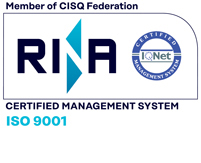Pakistan
PAKISTAN: SOLAR PANELS FLOODED INTO PAKISTAN DURING THE FIRST HALF OF 2024
Pakistan is awash with solar panels. In August 2024, BloombergNEF revealed Pakistan had imported 13 GW of Chinese modules in the first six months of the year. there is so much oversupply, modules are “lying on the road.” The country had around 3.5 GW of module demand in 2023. Pakistan become the third-biggest market for Chinese module exports in early 2024. Solar developers want greater liberalization of the nation’s electricity market but the government is concerned that moving too quickly could place more pressure on utilities already burdened by high capacity payments.Importing goods in Pakistan normally requires a letter of credit (LC), a type of assurance for foreign transactions issued by the importer’s bank. Issuing LCs was restricted during the foreign exchange crisis of 2022 but this created an opportunity for Pakistani businesses already generating US dollar income through exports. There was a massive 100% margin in the trading business. Everyone jumped in and started ordering lots of panels. A lot of companies that have exports, if they export rice for example, they would bring their dollars back from abroad. Suddenly you saw a large increase in the distribution business.The panel glut, however, obliterated those margins in 2024 and PV modules are being sold at a loss. Everyone who has access to capital has gone for solar. Wateen Energy Solutions has installed 30 MW in an 18-month period and expects to install around 50 MW of solar in 2025. The company’s development portfolio ranges from a 100 kW array at Coca Cola Export Co. to most recently a 4.5 MW deployment for Master Group, one of Pakistan’s leading conglomerates. ROI is not only short because modules are cheap. There are generous net metering rates available to installations of up to 1 MW of generation capacity and with a three-phase grid connection, although the government is considering a reduced rate. Even if net metering tariffs do become less lucrative, solar will still be an attractive investment as Pakistan’s electricity costs have increased dramatically in a short space of time. The rapid rise in solar power adoption by Pakistani consumers has led to a 17% drop in grid electricity demand, causing a significant revenue shortfall for distribution companies (DISCOs). With soaring electricity prices and rising bills, more households, commercial establishments, and industrial users are turning to solar energy as an alternative, putting additional pressure on the country’s power sector. The growing adoption of solar energy has been driven by both financial necessity and technological advancements. The price of solar panels and inverters has dropped significantly, making solar systems more accessible to a wider range of consumers. According to official data, over 8,000 MW of solar panels have been sold across Pakistan, with around 3,000 MW now connected to the national grid through on-grid solar systems. These systems not only help users offset their own power bills but also allow them to contribute excess electricity back into the grid, further reducing overall grid demand. (ICE ISLAMABAD)
Fonte notizia: pv magazine




